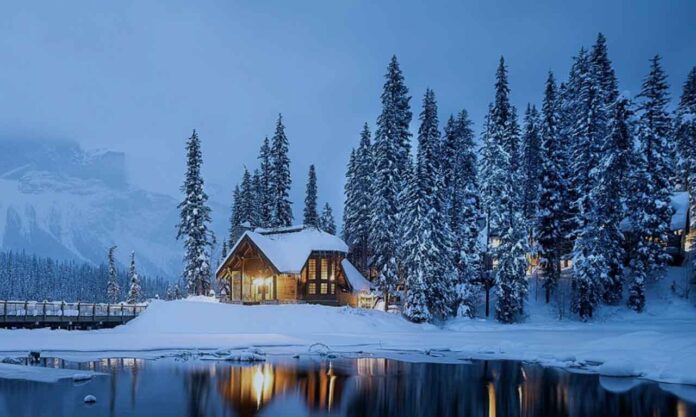Winter in Canada can be harsh and unpredictable, with temperatures often dropping well below freezing. Preparing your home for the season is essential to maintain comfort, prevent costly repairs, and ensure safety. Here’s a structured guide on how to thoroughly inspect and winterize each key system in your home.
If you’re worried about your heating system’s reliability, it’s wise to consider a professional heating repair service.Parent Heating & Cooling offers expert repair and maintenance services to ensure your system is fully prepared for the winter months. Their certified technicians can identify and resolve any issues quickly, providing peace of mind that your home will stay warm and comfortable all season.
1. Get Your Heat Checked
The first thing to do is to make sure your heating system is at its best. Here’s how you can ensure a trusted source of heat all winter:
- Test the Furnace: Fire up the furnace in early fall to ensure that it’s heating as it should. Anything sounding strange, funkier odors than usual?.
- Replace Air Filters: Dirty air filters reduce efficiency and deteriorate air quality. Replace them at the start of the season and every three months during peak seasons.
- Schedule a Professional Inspection: We clean and tune your heating system, predict potential problems and optimize your system for peak energy efficiency.
2. Seal Windows and Doors
Poor insulation around windows and doors is one of the biggest culprits in heat loss, leading to higher heating bills and less comfort indoors. To avoid this:
- Weatherstripping and Caulking: Check for any drafts or gaps around windows and doors. Run weatherstripping tape around the frames of the doors and caulk around the edges of the window panes to seal any leaks.
- Use Insulated Curtains: These are thermal or insulated curtains that trap heat inside the home.
- Check Cracks and Damages: Check the window panes and the frames of the doors for any crack in them. Do the repair or replacement regarding glass and the wood, whatever is needed.
3. Check your roof and gutters
Your roof and gutters have to be in perfect condition to hold the heavy accumulation of ice and snow. Here’s how to prepare:
- Look for Leaks and Soft Spots: Missing or loose shingles, buckled or curled shingles. Cracks anywhere in the roof allow water to seep in.
- Gutter Cleaning: Leaves, sticks, and all other types of debris need to be cleaned out of your gutters. In case the gutters become clogged, proper drainage of water is not allowed, and that can create more problems regarding ice dams and further roof damage.
- Add Gutter Guards: Retainers will prevent clogs and make maintenance easier.
4. Prepare Your Plumbing
Frozen pipes can burst and cause expensive water damages. Prepare your plumbing system to spare yourself from such headaches:
- Insulate Pipes in Unheated Areas: Use pipe insulation on pipes in attics, baseways, garages or on exterior walls. Many hardware stores carry foam covers that simply fit over pipes and can be installed very easily.
- Drain Outdoor Faucets and Irrigation Systems: Shut off the main water supply to exterior faucets and drain all hoses or sprinklers. This prevents freezing of water inside the faucets.
- Keep indoor temperatures consistent: Avoid letting temperatures in your home drop drastically to avoid pipes from freezing.
5. The Ventilation System Should be Maintained
This is useful in the good flow of air, prevention of excess moisture, and a resultant mold growth in colder months with the help of a well-functioning ventilating system.
- Clean and Inspect Vents: Cleaning vents and ductwork will minimize the amount of dust build-up to provide quality air.
- Use Dehumidifiers in High-Humidity Areas: Basements and bathrooms can retain extra moisture during winter. A dehumidifier helps in maintaining humidity within a safe range of:.
- Check the Exhaust Fans: Make sure that all fans in bathrooms and kitchens are working appropriately, as this helps to rid the rooms of excessive moisture.
6. Ensure Reliable Power Supply
Sometimes the winter storms affect the power lines, and as a result, there is an outage because of which one should always be prepared for the backup.
- Invest in a Generator: A very good lifesaver at the instance of any blackout may be a generator. A portable generator may power such units as heaters, lights, and refrigerators.
- Stock up on batteries and flashlights: Keep a flashlight with extra batteries in easy-to-remember spots around the house.
- Surge Protector: Power surges occur during an outage and even when the power comes back on; a surge protector helps protect your device and appliances from potential damage.
7. Outdoor Snow and Ice Preparation
Take these steps to prepare your outdoor space for the winter months:
- Trim Trees Near the House: This is because ice and snow will weigh down branches until they break. Trimming trees should reduce the risk of branches falling on your roof or power lines.
- Shovel and Salt Walkways: Maintain a supply of de-icing salt with either a high-quality snow shovel or blower to keep pathways free of ice and safe.
- Cover or bring in outdoor furniture: Protect your outdoor furniture by bringing it indoors, or cover with durable, weather-resistant material.
With this winter preparation checklist, you will be able to protect your home from seasonal wear and tear and make sure it remains comfortable, efficient, and safe. A little fall maintenance goes a long way in avoiding sudden repairs and making sure of a continuous warm and cozy home during Canada’s winter.








